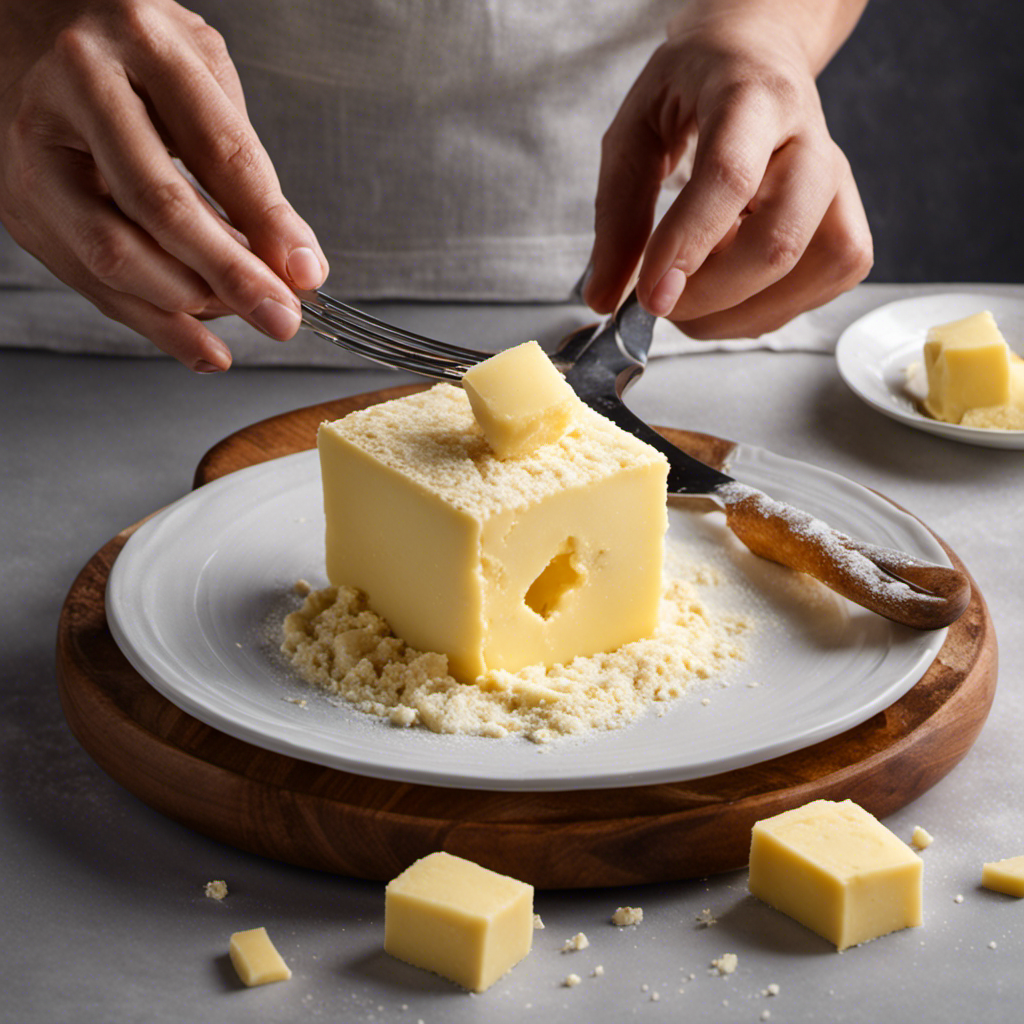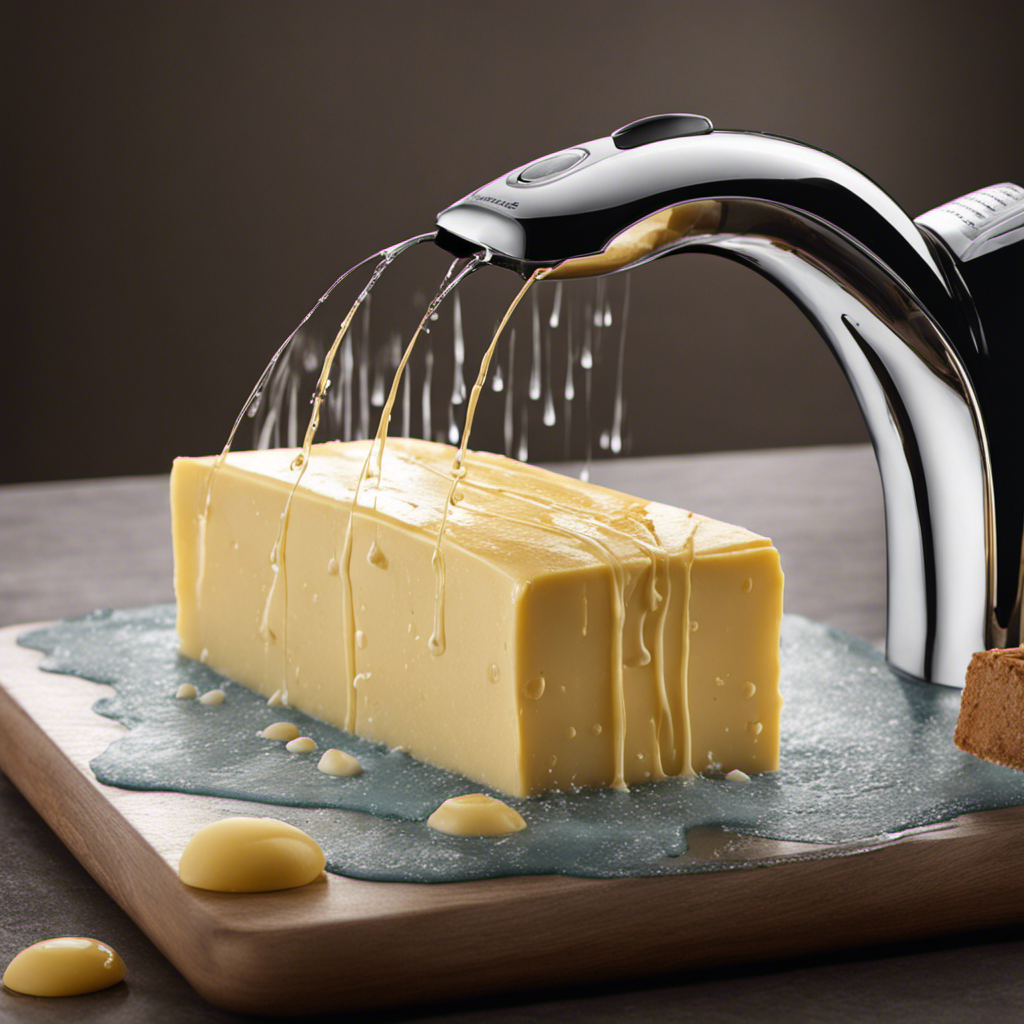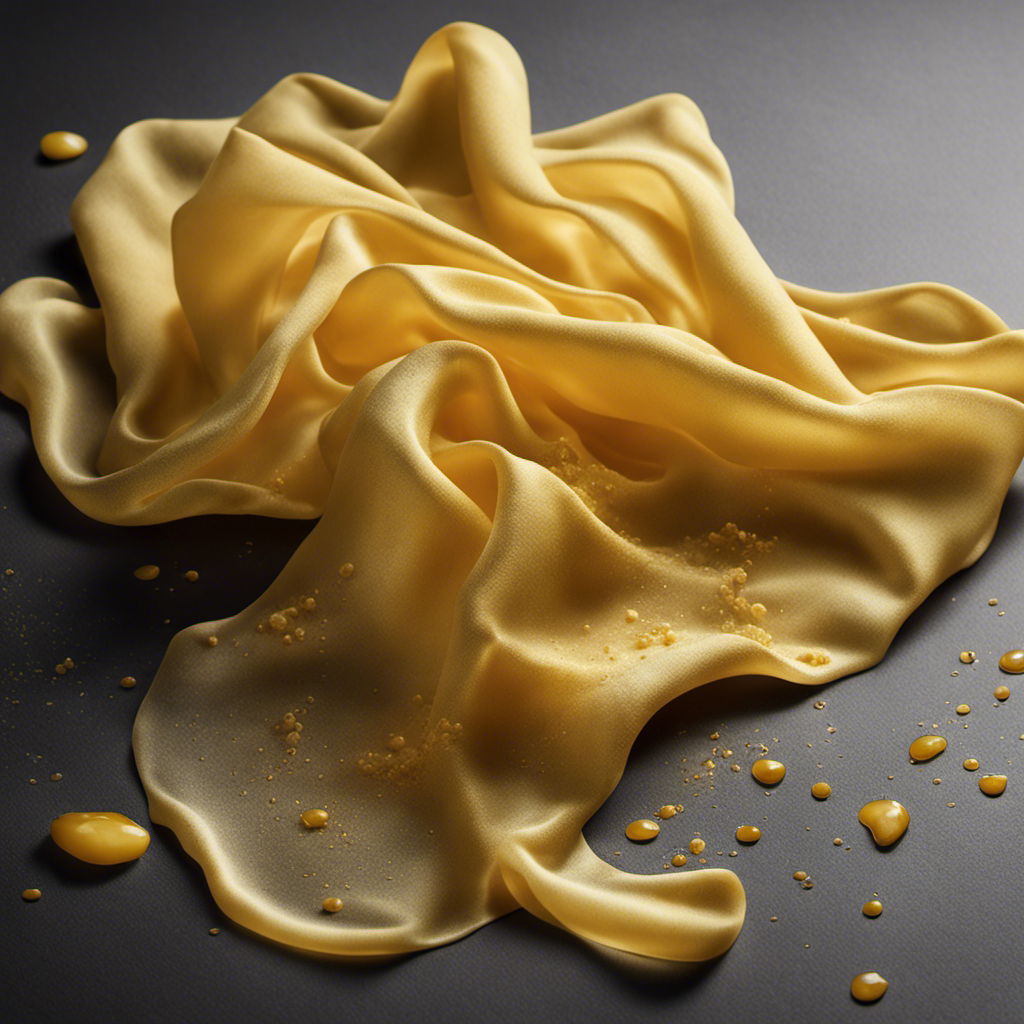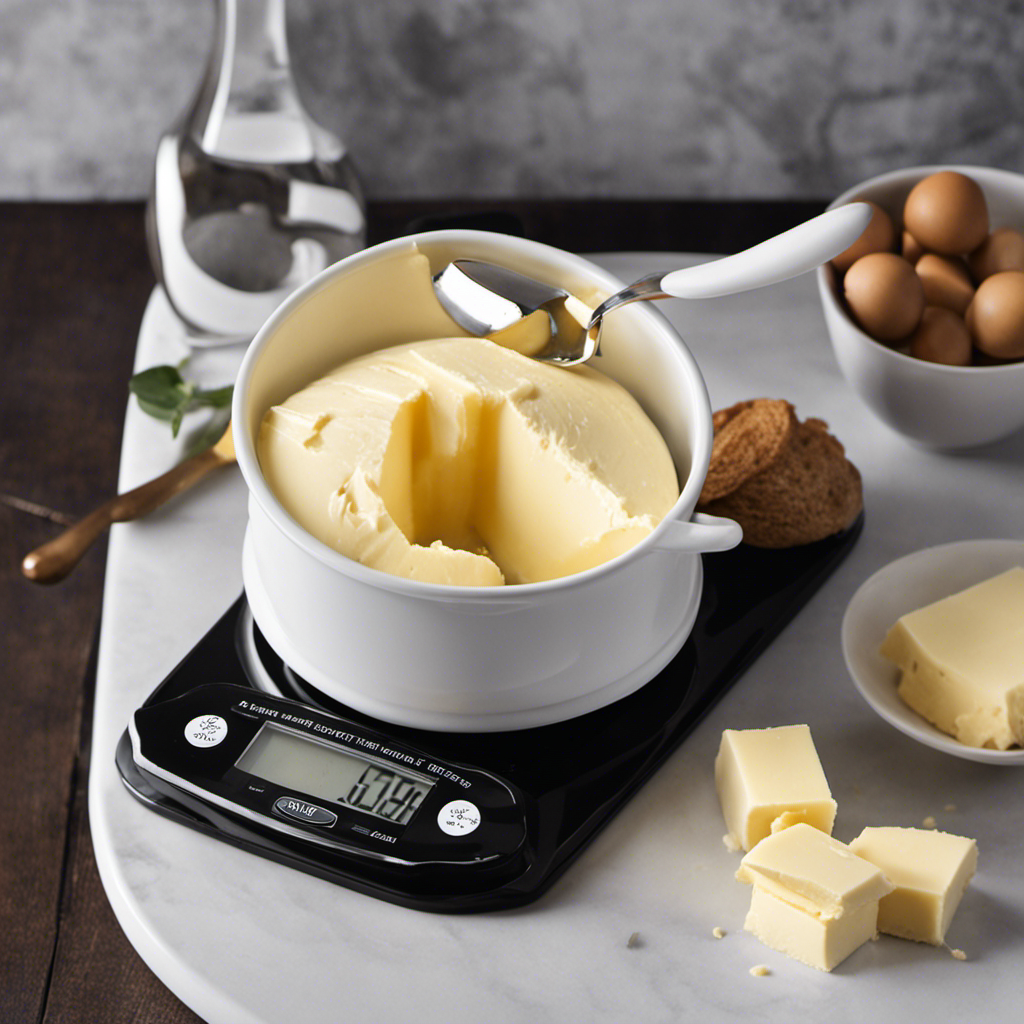Are you tired of facing difficulties when trying to cut butter without a pastry cutter? Don’t worry any longer! This article will show you how to cut in butter without the need for any special tools.
With just a few simple tools and the right technique, you’ll be able to achieve perfectly flaky pastries and biscuits every time. Say goodbye to those lumpy, uneven doughs and hello to buttery perfection!
So, let’s dive in and master this essential culinary skill together.
Key Takeaways
- Softening butter before adding it to the mixture can make it easier to incorporate.
- Using a knife technique allows for precise control and evenly distributed butter.
- Grating the cold butter into small pieces can help with even distribution.
- Working quickly and keeping the butter cold throughout the process is important for achieving the desired texture.
Tools and Equipment Needed
You’ll need a pastry cutter or a couple of forks for cutting in the butter. Choosing the right technique is crucial for achieving the desired results when it comes to incorporating butter into your recipes.
However, if you don’t have a pastry cutter on hand, there are alternative methods you can use. One option is to use two forks. Hold one fork in each hand and press them together in a crisscross motion to cut the butter into the dry ingredients.
Another technique is to use a knife. Simply chop the butter into small pieces and then use the knife to further cut it into the dry mixture. Whichever method you choose, make sure to take your time and work the butter into the ingredients until it resembles coarse crumbs.
Preparing the Butter
To prepare the butter for cutting in, simply soften it slightly before adding it to the mixture. Softening the butter helps achieve the desired texture and makes it easier to incorporate into the dry ingredients.
Here are some alternative methods for softening butter:
-
Microwave: Place the butter in a microwave-safe bowl and heat it in short bursts of 5-10 seconds until it becomes slightly soft.
-
Grating: Use a cheese grater to grate the cold butter into small pieces. This will help it soften quickly and evenly.
-
Rolling pin: Place the cold butter between two sheets of parchment paper and gently pound it with a rolling pin until it becomes pliable.
-
Room temperature: Leave the butter at room temperature for about 30 minutes, or until it is soft enough to be easily spreadable.
-
Hot water bath: Fill a bowl with hot water and place the butter in a smaller bowl on top. The heat from the water will gradually soften the butter.
Choosing the Right Technique
When it comes to choosing the right technique for preparing food, you have to consider the pros and cons of using a knife versus a fork. Using a knife gives you more control and precision. A fork can be useful for tasks like whisking or blending.
On the other hand, using your hand allows you to feel the texture and temperature of the ingredients. However, a machine can save you time and effort.
To ensure success in your culinary endeavors, it’s important to understand the advantages and disadvantages of each option. Choose the technique that best suits your needs and preferences.
Knife Vs. Fork
Grab a fork and start cutting the butter into small pieces.
When it comes to cutting in butter without a pastry cutter, you have two main options: the knife technique and the fork technique.
The knife technique involves using a sharp knife to cut the butter into small cubes or pieces. This technique allows for precise control and can result in evenly distributed butter throughout your dough.
On the other hand, the fork technique involves using a fork to break up the butter into smaller chunks. This technique is quicker and requires less skill, but may result in uneven distribution of butter.
Ultimately, the choice between the knife technique and the fork technique depends on your preference and the desired outcome of your recipe.
- Knife technique: precise control, evenly distributed butter
- Fork technique: quicker, less skill required, potential for uneven distribution
Hand Vs. Machine
If you’re looking for a quicker option, using a machine to break up the butter may be your best bet. While the traditional hand technique requires manual effort, a machine can make the process easier and more efficient. There are several benefits to using a machine for cutting in butter. Firstly, it saves time and energy, as the machine does the work for you. Secondly, it ensures a consistent result every time, as the blades of the machine create uniform butter pieces. Lastly, using a machine allows you to control the texture of the butter more easily, whether you prefer larger or smaller chunks. Overall, incorporating a machine into your baking routine can streamline the process and yield excellent results.
| Hand Technique | Benefits of Using a Machine |
|---|---|
| Requires manual effort | Saves time and energy |
| Inconsistent results | Ensures consistent butter pieces |
| More difficult to control texture | Provides better control over texture |
Tips for Success
Now that you understand the difference between hand and machine methods for cutting in butter, let’s dive into some tips for achieving a flaky crust without a pastry cutter.
To ensure the perfect flaky crust, keep these tips in mind:
- Use cold butter: Cold butter is essential for achieving that flaky texture. Make sure to chill the butter before starting the process.
- Grate the butter: Grating the cold butter using a box grater makes it easier to incorporate into the flour mixture.
- Use your fingers: Use your fingertips to gently rub the grated butter into the flour until it resembles coarse crumbs.
- Lift and toss: Lift the flour mixture from the bottom and toss it lightly, ensuring the butter is evenly distributed.
- Avoid over mixing: Over mixing can lead to a tough crust. Mix the dough just until it comes together and stop.
Alternative Methods for Cutting in Butter
One option for cutting in butter without a pastry cutter is to use two knives.
However, if you’re looking for alternative methods, there are a few options you can consider.
One option is to use butter alternatives such as margarine or coconut oil, which can be easier to cut into your dry ingredients.
Another option is to use a food processor. Simply pulse the butter and dry ingredients together until the mixture resembles coarse crumbs. This method is quick and efficient, but be careful not to over-process, as it can lead to a greasy texture.
Whichever method you choose, it’s important to ensure that the butter is cold and firm, as this will help create flaky and tender results in your baked goods.
Tips and Tricks for Success
Using alternative butter options or a food processor can make the process of cutting in butter easier and more efficient. When choosing the right temperature for your butter, it should be cold but not rock hard. Softened butter will not create the desired flaky texture in your baked goods. To avoid overmixing, use a light touch when incorporating the butter into the dry ingredients. Overmixing can lead to a tough and dense final product.
Here are five helpful tips and tricks to ensure success when cutting in butter:
- Use grated frozen butter for easier incorporation.
- Use a knife or fork to cut the butter into small pieces before incorporating.
- Chill your mixing bowl and utensils beforehand to keep the butter cold.
- Use your fingertips to gently rub the butter into the dry ingredients until the mixture resembles coarse crumbs.
- If using a food processor, pulse the butter and dry ingredients together until the desired texture is achieved.
With these techniques, you’ll achieve perfectly cut-in butter every time.
Now, let’s move on to troubleshooting common issues.
Troubleshooting Common Issues
If you find that your butter is not incorporating well into your dough, resulting in a lumpy texture, there may be a few potential causes.
One possibility is that the butter is too cold, making it difficult to evenly distribute throughout the dough.
Another issue could be uneven butter distribution, where some parts of the dough have more butter than others, leading to an inconsistent texture.
Lastly, achieving the desired texture can be challenging if the butter is not properly incorporated, as it is crucial for creating a light and flaky final product.
Butter Not Incorporating
When the butter is not incorporating properly, you can try using a fork to cut it into smaller pieces. This will help prevent clumping and ensure even distribution throughout your recipe.
Here are some tips to help you troubleshoot this issue:
- Soften the butter slightly before cutting it into smaller pieces. This will make it easier to incorporate into the flour mixture.
- Use cold butter if the recipe calls for it. Cold butter will create flaky layers in pastries and baked goods.
- Avoid overworking the butter. If you mix it for too long, it may start to melt and lose its structure.
- Make sure your hands are not warm when handling the butter. Warm hands can cause the butter to melt too quickly.
- If the butter is still clumping, you can try freezing it for a few minutes before cutting it into smaller pieces.
Uneven Butter Distribution
To achieve even distribution of butter in your recipe, it’s important to make sure your hands are not warm when handling it. When butter melts too quickly, it can lead to uneven distribution and affect the texture of your final product.
To avoid this, start with cold butter and cut it into small chunks. Using a pastry cutter or two knives, work the butter into the dry ingredients until it resembles coarse crumbs. The key is to keep the butter cold throughout the process.
If your hands are warm, it can cause the butter to melt and create clumps instead of evenly distributed chunks. By maintaining a cool environment and handling the butter with care, you can achieve a consistent and delicious result in your recipes.
Difficulty Achieving Desired Texture
You may struggle to achieve the desired texture if you use warm hands while working with the butter. Achieving a flaky pastry requires the butter to be cold and evenly distributed throughout the dough.
Here are some tips to help you achieve the desired texture:
-
Start with cold butter: Ensure that the butter is chilled before incorporating it into the dough. Cold butter will create pockets of steam during baking, resulting in a flaky texture.
-
Use a grater: Grating the cold butter into the flour allows for easier incorporation and even distribution.
-
Cut the butter into small pieces: Instead of using your hands to mix the butter into the dough, cut it into small cubes. This will make it easier to evenly distribute and prevent melting.
-
Work quickly: Keep the butter as cold as possible by working quickly. The longer the butter is exposed to warm hands and room temperature, the more likely it will melt and lose its flakiness.
-
Chill the dough: After incorporating the butter, chill the dough for at least 30 minutes before rolling it out. This will help the butter solidify and maintain its flaky texture during baking.
Conclusion
Congratulations! You’ve now mastered the art of cutting in butter without a pastry cutter. With just a few simple tools and a little bit of practice, you can achieve perfectly flaky pastries and crumbly toppings. These will leave your taste buds dancing with delight.
So go ahead, grab that butter and get ready to impress your friends and family with your newfound skills. Get ready to take your baking game to the next level!









